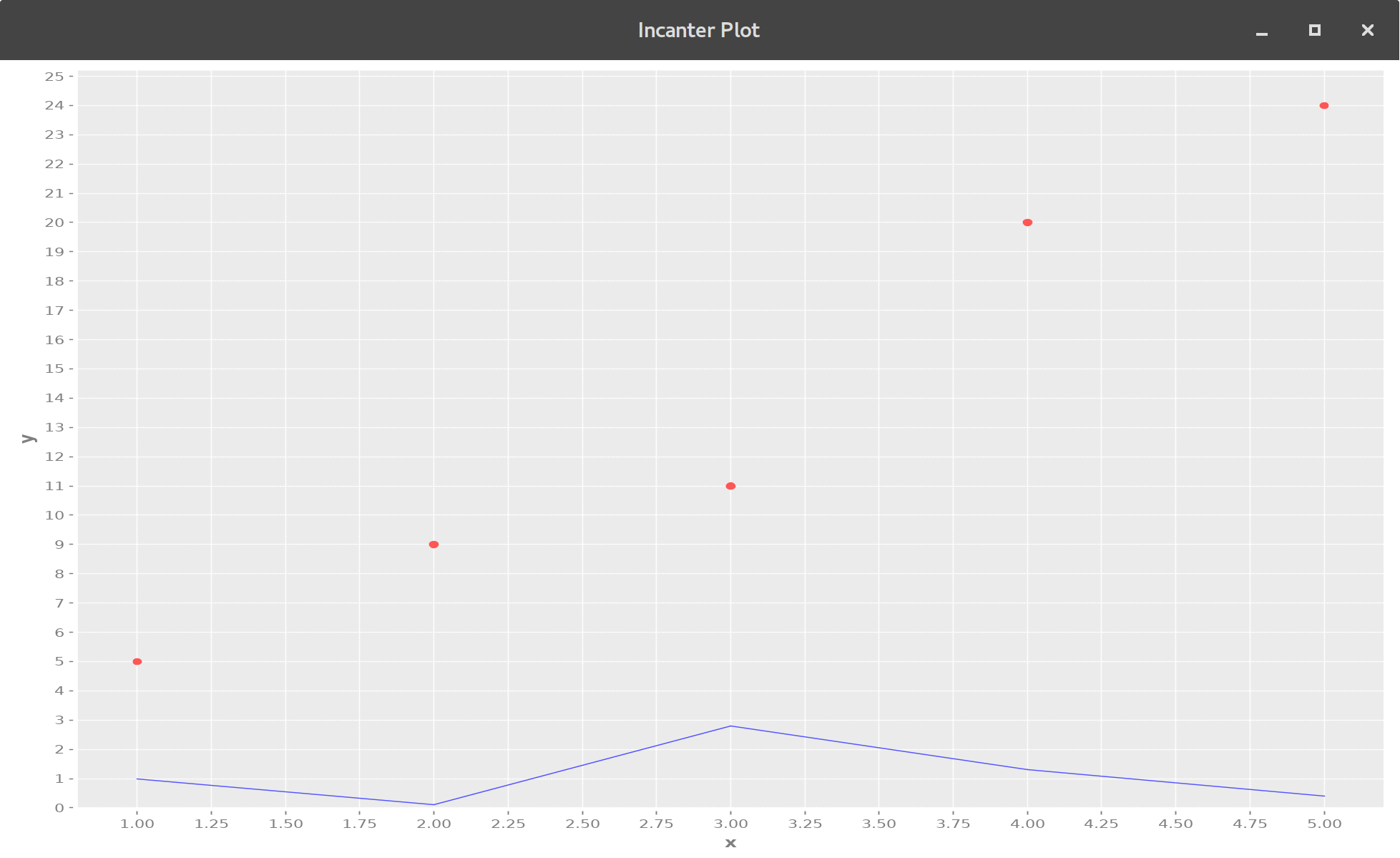February 1, 2017
Clojure - R Squared
We'll pick back up from where we left off in the linear regression post last time. So we'll be keeping pretty much the same dependency of incanter and the name space should still look like the following below more or less.
(ns incantertut.core
(:use [incanter.charts :only [histogram scatter-plot pie-chart add-points add-lines]]
[incanter.core :only [view]]
[incanter.stats :only [sample-normal linear-model]]))
We are going to pick up where we left off and find some more interesting properties of the line of best fit such as the r squared value and other properties such as the residuals. So we know that the line of best fit we have which we constructed from the following data ...
(def x [1 2 3 4 5])
(def y [5 9 11 20 24])
(linear-model y x)
(:fitted (linear-model y x))
;; => [4.000000000000011 8.900000000000013 13.800000000000015 18.700000000000017 23.60000000000002]
(:residuals (linear-model y x))
;; => [0.9999999999999893 0.09999999999998721 -2.800000000000015 1.299999999999983 0.3999999999999808]
(map (fn [x] (if (neg? x) (* x -1) x)) (:residuals (linear-model y x)))
;; => (0.9999999999999893 0.09999999999998721 2.800000000000015 1.299999999999983 0.3999999999999808)

(view (add-lines (scatter-plot x y)
x (map (fn [x] (if (neg? x) (* x -1) x)) (:residuals (linear-model y x)))))
Now lets do something else with the residuals a common thing to do is that you can square the residuals which will get you the sse or the sum of squares due to error.
(reduce + (map (fn [x] (* x x)) (:residuals (linear-model y x))))
;; => 10.7
(:sse (linear-model y x))
;; => 10.7
(:r-square (linear-model y x))
;; => 0.9573365231259969